Content
Tomato No worries, no hassle - cold-resistant, early ripening, determinate, universal variety that does not require pinching. It is easy to care for and gets sick extremely rarely. Cultivated both in greenhouses and in open ground. With appropriate agroponics, yields do not depend on the growing location.
History of selection
The No worries, no hassle tomato was bred by Russian breeders. They worked to ensure that the crop met most of the requirements of gardeners: it gave a good harvest, was immune to late blight, and did not require pinching skills. The variety is not included in the State Register.
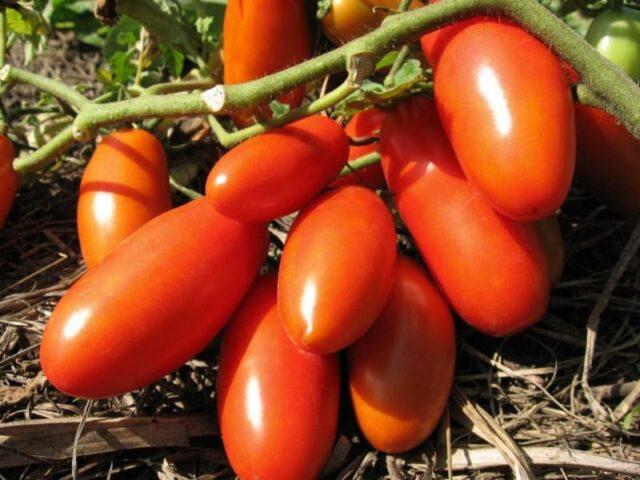
Organizer of culture – Ural Summer Resident
Description of the tomato variety No worries, no hassle
Tomato No worries, no hassle - a low-growing, early-ripening variety. The height of the bush does not exceed 45-50 cm, the stem is erect, so there is no need to tie up the plant.
The fruits grow in clusters, each with 5-6 pieces.The berries of the tomato are fleshy, oblong in shape, with a slightly elongated nose. The color of the tomatoes is juicy red, the skin is smooth but dense. Weight varies between 50-60 g.
The tomato tastes slightly sour, but the sweetness of the fruit outweighs it.
Characteristics of tomato No worries, no hassle
The main advantage of the No worries, no hassle tomato variety is cold resistance. The tomato is suitable for cultivation in regions of risky farming. They practice cultivation under film and in open ground.
Tomato yield No worries, no hassle
Productivity is high. The variety is resistant to low temperatures and is planted in the ground quite early. Full yield of the crop occurs before the onset of the August rainy season, when late blight affects tomato fruits.
Resistance to diseases and pests
The best prevention to help minimize the incidence of tomato diseases is compliance with planting and crop rotation schemes. The early-ripening species, although resistant to diseases, is susceptible to pests and fungal diseases. Bushes cultivated under film and in open ground each suffer in their own way.
In a greenhouse, due to excess moisture, different types of rot (white, brown, top rot) can appear. Outdoor tomatoes are susceptible to fungal and viral diseases.
Pests threaten the bushes of the variety in both cases. The most dangerous is the Colorado potato beetle. The whitefly butterfly is not far behind, causing damage both in the greenhouse and in the open ground.
Methods of application
The fruits of this variety are small in size and can be dried. This way they retain all the beneficial qualities. Tomatoes of this variety are used fresh in salads, as well as for preservation.

Due to their fleshiness, the fruits are ideal for making juices, sauces, and ketchups.
Advantages and disadvantages
Summer residents fell in love with the crop, because the variety ripens very quickly when the cost of tomatoes on the market is quite high. The earlier the seedlings are planted, the more profitable the sale of the crop.
One of the undoubted advantages of the crop is good yield with minimal maintenance costs.
The advantages of the variety No worries, no hassles include:
- early ripeness;
- ease of care;
- cold resistance (possibility of growing in central Russia, the Urals, Siberia);
- high resistance to diseases and pests;
- versatility of application;
- possibility of transportation;
- excellent taste;
- culture does not require formation, stepsoning.
Tomatoes have few disadvantages, but they do exist. To get a good harvest, the No worries, no hassle variety has to be cultivated by seedlings. If the air temperature is above +30˚С, the fruits do not bud. When growing in a greenhouse, gardeners note the irrational use of planting space. Low-growing bushes occupy the same area as indeterminate bushes, but their yield is significantly less than varieties growing up to 2-2.5 m.
Features of cultivation
Tomato No worries, no hassle for cultivation in a greenhouse is recommended to be sown in late March - early April. If the variety will be grown in open ground, sowing is carried out 50-60 days before transplanting to a permanent place.
Sowing seedlings
Treated varietal seeds do not need to be soaked in a solution of potassium permanganate before sowing. Disinfection is carried out for planting material collected by hand.
The prepared container is filled with soil mixture. Make grooves at a distance of 1 cm from each other and place planting material in them. The gap between the seeds is at least 1-1.5 cm. Sprinkle the top with a 0.5-1 cm layer of soil and water with warm water.The container is covered with film and sent to a warm room where the air temperature does not drop below +20˚C.
After the emergence of seedlings, the shelter is removed. The room temperature is reduced to +15˚С.
Picking, transplanting into the ground
Planting into individual pots is carried out in the phase of two true leaves. The soil near the seedlings is crushed (compacted), after which the plant is watered.
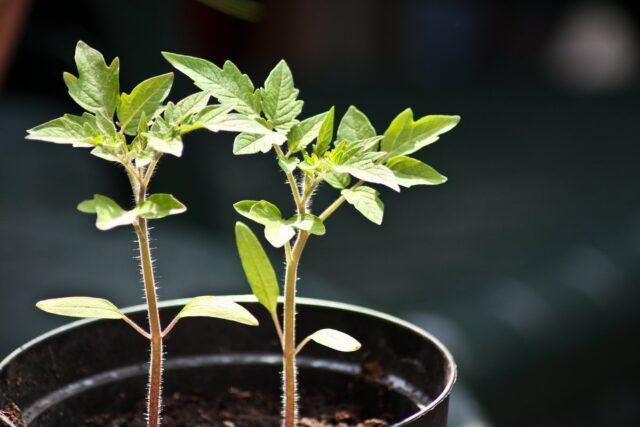
Before planting the variety under film or in open ground, the seedlings should be hardened
A day before transferring to a “permanent place of residence,” the seedlings are well filled with water. It is recommended to transplant by transshipment on a cloudy or rainy day. In this case, the process of adaptation to a new place will be painless.
Watering
Basic rules of irrigation:
- Watering is carried out with warm, settled water.
- The procedure is carried out in the morning or evening hours, when there is no scorching sun.
- Pour water strictly at the root, without getting on the leaves.
Frequent watering of tomatoes is not recommended. Irrigation is carried out once a week at the rate of 5 liters for each bush.
Hilling, weeding
During the growing season, the tomato must be hilled twice. The first time the procedure is carried out at the moment when, after transplantation, root rudiments appear on the stem. The second time, when the bottom of the stem turns blue.
Feeding
During the season, tomatoes of the No worries, no hassle variety are fertilized three times:
- The first feeding is carried out a week after transplantation. To prepare the solution, take 10 liters of water, 1 tbsp. l. nitrophoska, 0.5 liters of liquid mullein. Consumption for 1 bush – 0.5 l.
- The second time tomatoes are fertilized during flowering.The fertilizer is prepared as follows: dissolve 1 tbsp in a bucket of water. l. superphosphate, 1 tsp. potassium sulfate, 0.5 liters of bird droppings. 1 liter of solution is poured under the plant.
- When the fruits have set, it is necessary to feed the seedlings with boron, iodine, magnesium and potassium. To prepare the solution, take a bucket of water, add 1.5 liters of sifted ash, 10 ml of iodine, 10 g of boric acid powder. Apply 1 liter of solution under one bush.
Pest and disease control
Timely detection of the disease will help preserve the harvest. It is recommended to periodically inspect plants for the presence of parasites and diseases. To protect the tomato No worries, no hassle from disease, you can treat the beds with fungicides (Radomil, Acrobat) for preventive purposes.
Agrotechnical techniques that will help avoid infection of tomatoes with diseases:
- compliance with crop rotation - you can cultivate tomatoes in the same place no earlier than after 3-4 years;
- pre-sowing tillage, fertilization;
- disinfection of seed material;
- compliance with the watering regime, mulching the area.

Manual control of pests affecting tomato beds is ineffective
It is recommended to treat the plants with insecticidal preparations before flowering. Commander, Iskra, and Bison will help you cope with the Colorado potato beetle. You can repel whiteflies using Actellik and Aktara.
Conclusion
Tomato No worries, no hassle - an ideal variety for beginning gardeners who do not have sufficient experience in caring for plants of the nightshade family. Suitable for growing in any climate zones, including the Urals and Siberia, and is not afraid of short-term cold snaps.
Reviews from gardeners about tomatoes No worries, no hassle

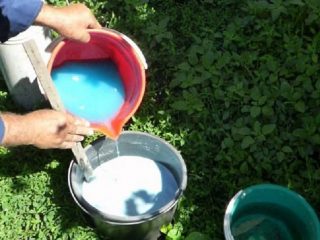
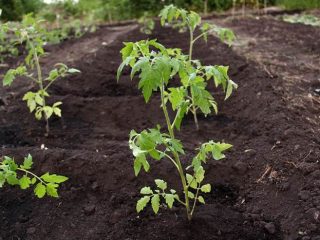
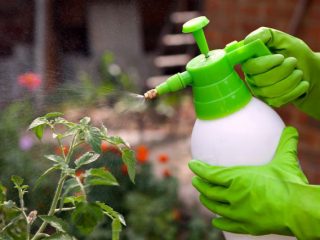
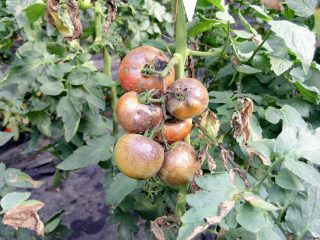
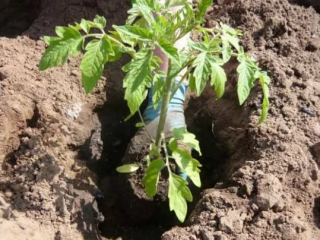

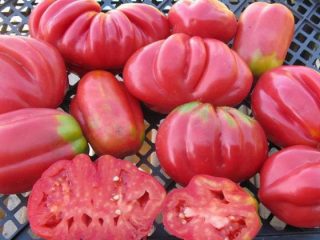
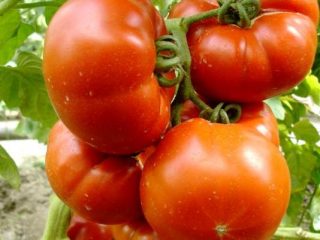
Excellent variety! Today I will grow it for the third year. There are no worries or hassles with him - he is not afraid of cold, heat, there are a lot of brushes, and a lot of tomatoes on the brush. Helps in any weather.